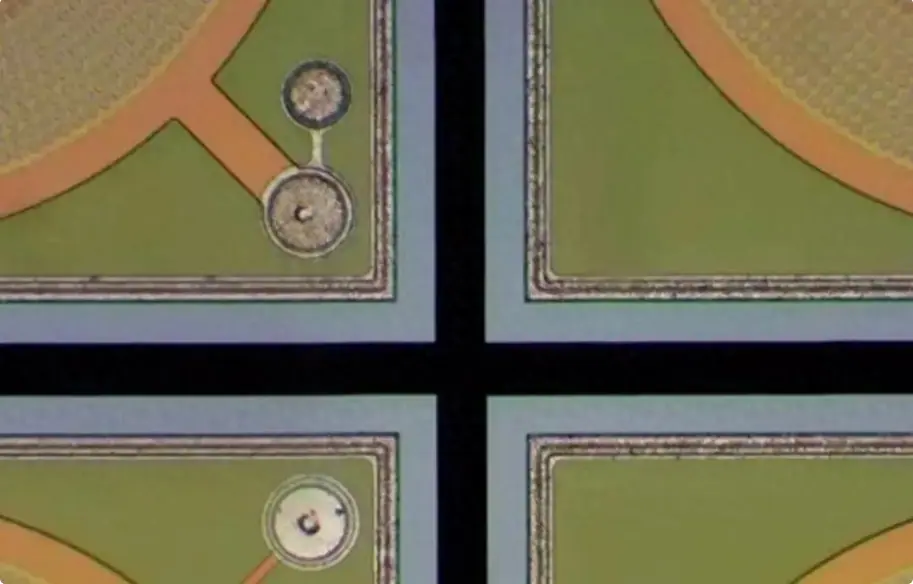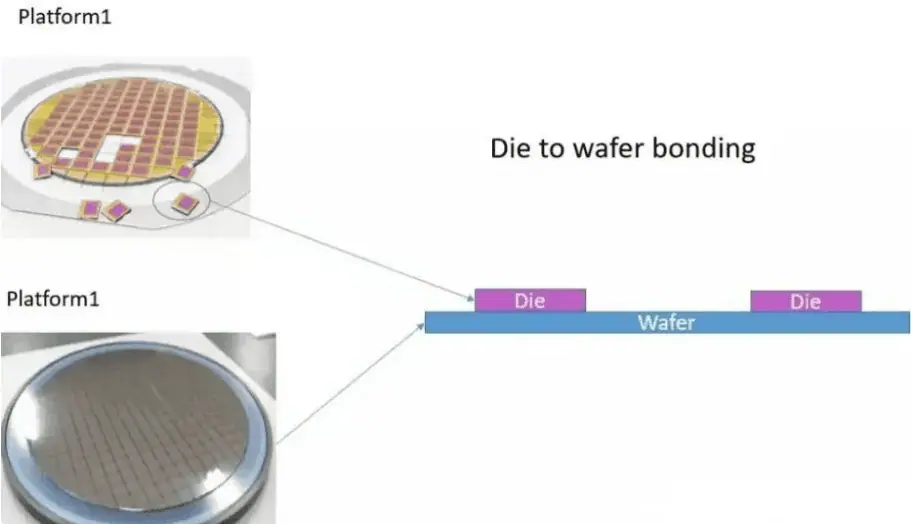Each chip on the wafer is not cut randomly; there is a gap between each chip, which is called the Saw Street. However, the process of the chips is so small that it’s difficult to see the distance between the chips with the naked eye. If you zoom in, you can see that there is a gap between each chip.

Each small piece cut off can be called a Die, which can be used to make a chip.
Overall, the wafer on the right is called a Wafer, with individual Dies on it. You can see there is a gap between two Dies, and as long as you don’t cut into the Dies during the process, everything will be fine.

So, how can we ensure that the tiny transistors are not damaged during the cutting process?
The answer is quite simple. During chip design, a “bleed area” is left around the chip. A small deviation, like a few dozen or even hundreds of micrometers (depending on the allowable error for the chip), will not affect the chip itself.
For example, when some CPUs have their covers removed or some GPUs don’t have borders, and the heatsink is installed causing the corners or edges of the chip to break, if it’s not severe, the chip can still operate normally without any impact. This is because the actual functional parts of the chip were not damaged. However, if the damage is more severe, the chip will be unusable.

Disclaimer:
- This channel does not make any representations or warranties regarding the availability, accuracy, timeliness, effectiveness, or completeness of any information posted. It hereby disclaims any liability or consequences arising from the use of the information.
- This channel is non-commercial and non-profit. The re-posted content does not signify endorsement of its views or responsibility for its authenticity. It does not intend to constitute any other guidance. This channel is not liable for any inaccuracies or errors in the re-posted or published information, directly or indirectly.
- Some data, materials, text, images, etc., used in this channel are sourced from the internet, and all reposts are duly credited to their sources. If you discover any work that infringes on your intellectual property rights or personal legal interests, please contact us, and we will promptly modify or remove it.



